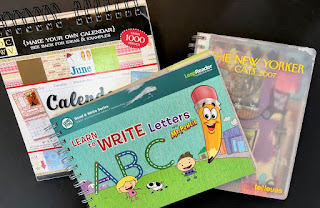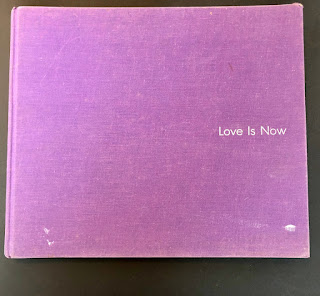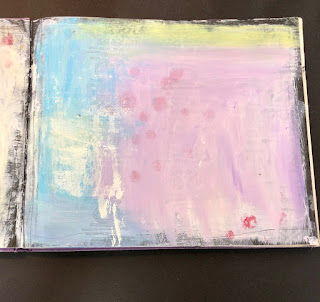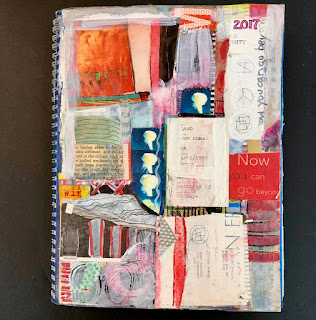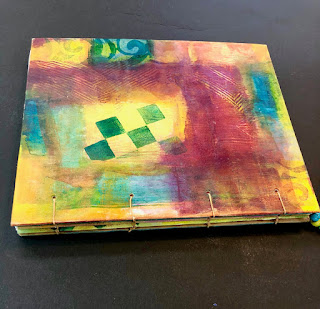I painted the cover with light blue acrylic paint. Milk paint or chalk paint also distresses nicely. I let it dry over night and sanded it lightly with a green scotch bright pad.
I didn't have to prepare the original surface because it was book cloth and absorbed the paint readily.
Now is the time to remove some of the pages. Randomly tear out sections until you are left with a good amount left in the book. I then took a ruler and carefully tore the remaining pages leaving a small edge about 2 inches. These are what you are going to add your artwork and collage to. Use a good quality paper glue (such as PVA) Be creative and use different weights and types of paper.
Here are some examples of what the pages look like. As you can see this journal is ready and waiting for me to begin.
Here is another way to transform a book into a journal. I liked the large format of this coffee table book. I decided to leave the pages intact, they were a good size and weight. So I removed first and last signatures and prepared the pages with gesso.
Oh, the possibilities......
Children's book or board books
Reader's Digest Condensed Books
Use your imagination, you'd be surprised with how many everyday things you can turn into a journal. Good Luck!
Don't forget to follow me on instagram stories @lynncorsibland for the #stayathome journal challenge that starts on May 1st.



















